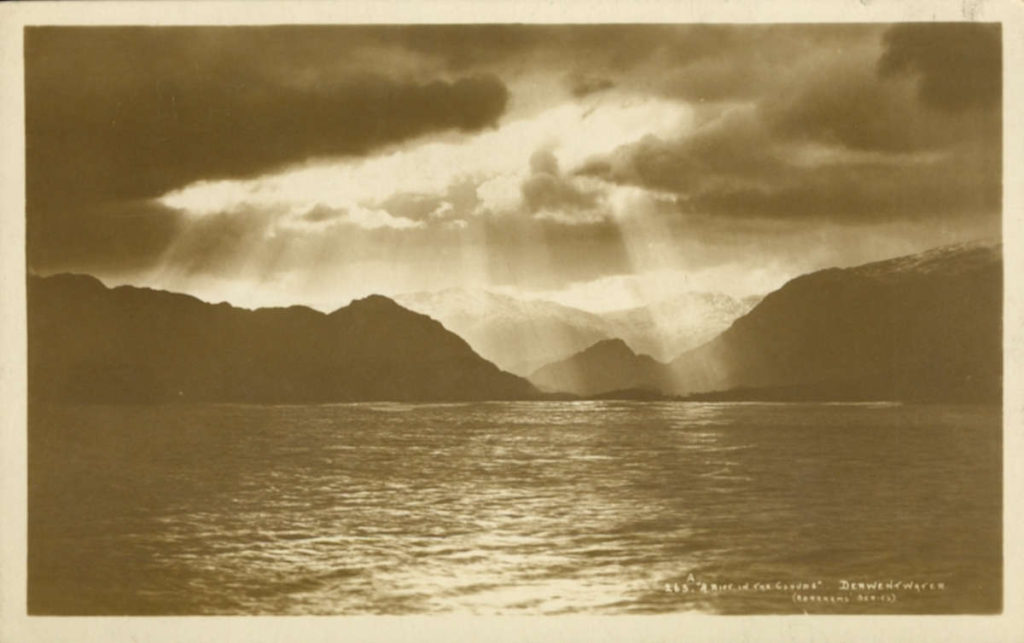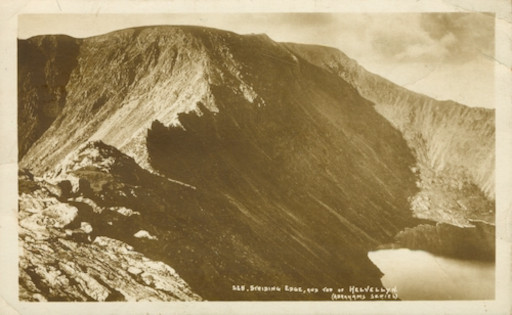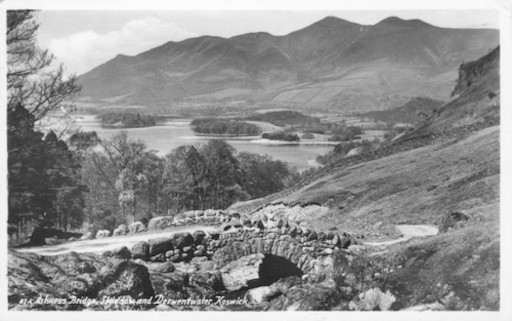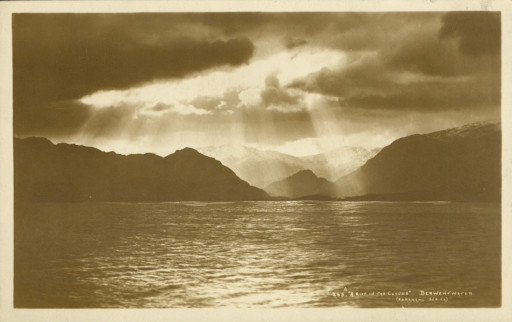Picture Postcards and Rock Music
If you love the Lake District, you will surely love the postcards of G.P. Abraham. Ltd. The company was named for its founder, a Victorian photographer, musician, and entrepreneur.
Born in 1846 in Wiltshire, George Perry Abraham was just 22 when he set up his photographic studios in Lake Road, Keswick. There he produced portraits for cabinet cards and carte-de-visites. An advertisement for the studios, published in 1881 in The Lakes Visitor, described his services:
‘Babies Dogs Horses &c. (for which special convenience is provided) photographed instantaneously. Wedding parties, Groups, Residences, Machinery etc., etc., photographed anywhere’[1]
The English Lakes Visitor, March 26, 1881
Clearly, he would turn his hand to anything, but it was the stunning Lakeland landscape and an interest in outdoor activities that inspired some of his best work. Abraham became a notable photographer; from 1898 a Fellow of the Royal Photographic Society.
Two of his sons (George and Ashley) joined him in the business. Both would become talented photographers, writers, and climbers in their own right, and together they were to publish some of the earliest photographs of rock climbing in the Lake District[2].
Stones from Skiddaw
As a photographer George Perry Abraham excelled. However, he was also a capable musician and his business reflected that. The Lake Road studios doubled as a music shop, selling and hiring out pianos, harmoniums, and even sheet music.
One of the more interesting instruments on view in the shop was a ‘Rock Harmonicon’, one of several lithophones (percussion instruments made of rocks) made in the area[3]. Using stones gathered from nearby Skiddaw, it was a ‘fine specimen of workmanship, with a range of nearly five chromatic octaves’[4].
By the 1880s Abraham had begun to combine his artistic and musical talents in a series of lectures that he took across the country. It was ‘A Grand Evening Entertainment’ according to an advertisement from 1888[5].
‘With the aid of a first-class triple-lens lantern and the oxy-hydrogen light he, from his own photographs, gives 14ft pictures of some 200 different scenes of interest… The addition of apt vocal and instrumental music gave an additional charm to the entertainment’.[6]
The English Lakes Visitor August 25, 1888
Legacy
Photographer, musician, shopkeeper, freemason, town councillor, husband, father of five, and, of course, postcard publisher, George Perry Abraham died in 1923. His death made the newspapers across the country: “he was fearless, outspoken and of independent opinions” wrote the Daily News (London) after his death.[7]
The company he founded was to survive for another 50 years.
[1] “Artistic Photography” The English Lakes Visitor, March 26, 1881. Available at the British Newspaper Archive www.britishnewspaperarchive.co.uk
[2] Griffin, AH. The Abraham Brothers Photographing the Past. Available at http://footlesscrow.blogspot.com/2010/06/abraham-brothersphotographing-past.html
[3] The Musical Stones of Skiddaw Wikipedia. Available at https://en.wikipedia.org/wiki/Musical_Stones_of_Skiddaw
[4] Blades, James. Percussion Instruments and Their History. United Kingdom: Bold Strummer, 1992. P84
[5] “A Grand Evening Entertainment” The English Lakes Visitor 18th August 1888. Available at the British Newspaper Archive www.britishnewspaperarchive.co.uk
[6] “Abraham’s Tour of the Lake District” The English Lakes Visitor August 25, 1888, p5. Available at the British Newspaper Archive www.britishnewspaperarchive.co.uk
[7] “Mr G.P.Abraham Dead”, Daily News (London), April 11, 1923, p5. Available at the British Newspaper Archive www.britishnewspaperarchive.co.uk




